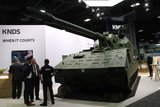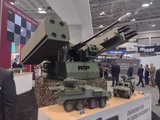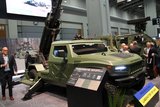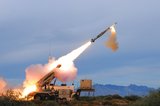Precision weaponry assists revised Afghanistan strategy
A United Nations (UN) report measuring the number of civilian casualties in Afghanistan has validated efforts to deliver more precision weaponry to coalition forces, industry sources have told Land Warfare International.
Published on 10 August, the ‘Mid-Year Report on Protection of Civilians in Armed Conflict’ showed a 18% decrease in the number of civilian casualties (386) caused by NATO and Afghan National Security Forces in the first six months of 2010, compared to 2009 figures.
This compares to 2,477 civilian casualties by anti-governmental element actions which registered a 53% increase on the same period in 2009. According to the UN, the 18% drop in casualties by NATO and ANSF troops was driven by a 64% decline in deaths and injuries caused by aerial attacks.
One example of this is Raytheon’s 155mm Excalibur precision artillery ammunition, which is being used in ‘low numbers’ on operations in Afghanistan and Iraq, according to company officials. The US Department of Defense (DoD) requires hits to register within ten metres of a specified target 90% of the time although Raytheon told LWI that the munition was routinely hitting within five metres.
Currently, the US company is manufacturing around 500 Excalibur 1A1 rounds a year and is awaiting a DoD decision within the next couple of months to enter full rate production. However, ‘budget cuts’ announced in May by the DoD reduced initial requirements for some 30,000 Excalibur rounds down to 6,200.
The company said it had also delivered 15 1B rounds to the DoD within recent weeks, which boost reliability to 95% and reduce costs by some 50%. The 1A2 round, which extends Excalibur’s range from 30 to 40km, has yet to be deployed operationally.
Jim Riley, Raytheon vice president for land combat systems, stated there had been a relative increase in usage of Excalibur by the US Marine Corps in Afghanistan recently, with some army units using it for ‘danger close’ fire support missions within 80 metres of friendly forces. Conventional artillery danger close boundaries can be as much as 600 metres, Raytheon sources added.
‘General Petraeus has a particular challenge to provide immediate response [fire support to coalition forces] 24/7 for operations. [He wants forces to] go out and live with the [indigenous] people and only use the firepower needed to win the fight,’ Riley told LWI.
Elsewhere, US Central Command have described how 319th Airborne Field Artillery Regiment (Task Force King) had started to use less-explosive shells. This leaves less opportunity for unintentional casualties caused by misidentified targets or errant rounds.
Earlier this year, leaked military documents showed British troops’ misidentification of non-combatants and use of ‘warning shots’ was a significant factor in the number of civilian deaths and injuries attributable to them since 2007.
New guidelines in minimising collateral damage and civilian casualties were enforced by former ISAF (International Security Assistance Force) commander, Gen. Stanley McChrystal in 2009. In a bid to win over the hearts and minds of the local population, changes to rules of engagements limited permission for aerial attacks or fire into buildings.
Additionally, the new ISAF commander, Gen. David Petraeus issued a directive this month that condemned the use of excessive force and provided guidance on assessing the risk of civilian presence before opening fire.
ISAF also attributed the increase in Taliban-caused civilian casualties to intimidation tactics. German Army Brig Gen. Josef Blotz, ISAF spokesman, said: ‘Several recent events show that the Taliban have abandoned any pretence of caring for Afghan civilians. Their actions show they are willing to harm anyone to return to power.’
More from Land Warfare
-
AUSA 2025: AM General Hawkeye awaits first production contract
AM General presented its new Hawkeye at AUSA 2025 in Washington, with prototypes of the howitzer system having been trialled in Ukraine last year.
-
![AUSA 2025: Lionstrike lays out plans for British Army vehicle bid as competitors get ready]()
AUSA 2025: Lionstrike lays out plans for British Army vehicle bid as competitors get ready
In September 2025, BAE Systems announced that it was joining GM Defense and NP Aerospace to form Team Lionstrike. The team will be offering a version of GM Defense’s infantry support vehicle which is based on the commercial Colorado vehicle.
-
AUSA 2025: KNDS France to bid for US Army requirement
The CAESAR Mk II, which was debuted internationally at Eurosatory last year, is a step up from the first model which has seen combat in Ukraine and the Middle East.
-
AUSA 2025: IAI reveals robotic route clearance system
The Elta 6631 has been developed using the experience of the Israel Defense Forces in route proving, and can be customised for various customers and circumstances.
-
![AUSA 2025: Boeing wins $2.7 billion PAC-3 production contract as it explores supply chain expansion]()
AUSA 2025: Boeing wins $2.7 billion PAC-3 production contract as it explores supply chain expansion
Boeing will work with prime contractor Lockheed Martin to boost PAC-3 production capacity to hit higher delivery targets, as demand for the interceptors continues to surge.
-
![AUSA 2025: AM General “on target” for JLTV full-rate production in 2026 as it uncrews a Humvee]()
AUSA 2025: AM General “on target” for JLTV full-rate production in 2026 as it uncrews a Humvee
AM General believes it has completed working with customers for the Joint Light Tactical Vehicles to reach a final version of the vehicle and to prepare to begin producing vehicles under full rate production.

























